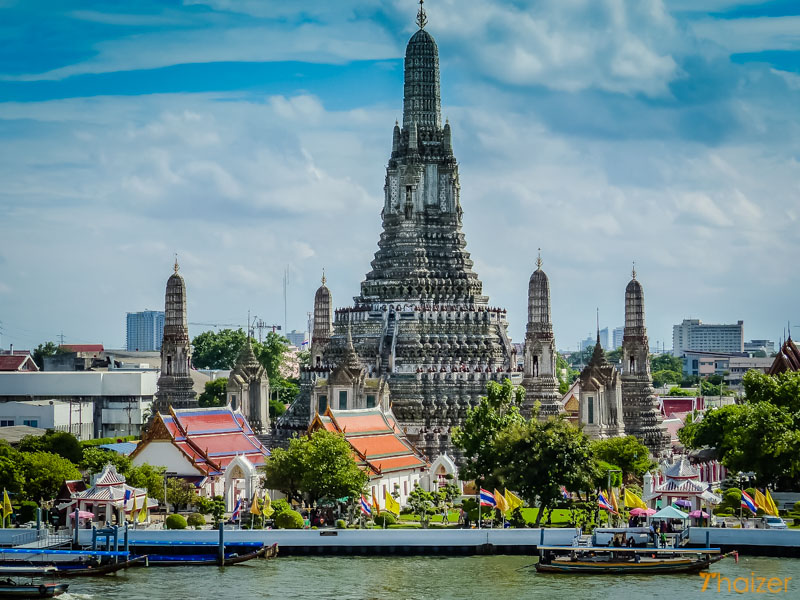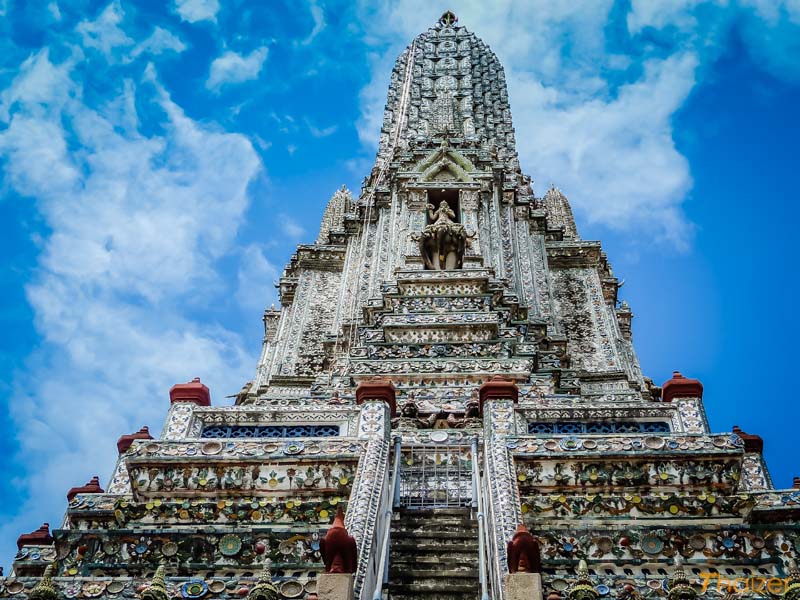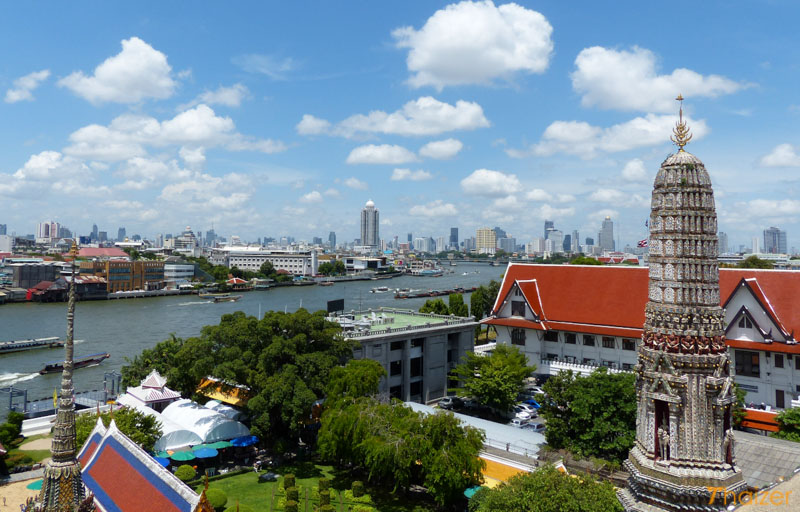One of Bangkok’s most recognizable landmarks is Wat Arun also known as the Temple of the Dawn which is located on the banks of the Chao Phraya River. A temple has occupied the site for hundreds of years, but the name and design of the temple has changed a number of times over those years.

In 1768, the man who was to become King Taksin travelled to Thonburi from Ayutthaya to establish a new capital on the banks of the Chao Phraya River. According to legend, he arrived just as dawn was breaking at the site of the temple which is known today as Wat Arun. For a while, the temple became the royal chapel and housed the Emerald Buddha. However, it was during the reign of Rama II (1809-1824) that the current design of the temple began to take shape. The temple was further enhanced during the reign of Rama III (1824-1851) and the largest central ‘phra prang’ was extended to the current height seen today.
Wat Arun is a Khmer-style temple with four prangs (also known as prasat) and one larger one in the middle. This layout is a representation of the five sacred mountains which were home to the gods according to Khmer, Hindu and Buddhist cosmology. The central prang represents Mount Meru, the centre of the universe. When the height of the central prang was extended, Rama III ordered that colourful ceramics and porcelain should be used to form elaborate motifs and designs. This unusual design feature makes the prangs shimmer and shine in the sunlight and give the temple a unique appeal that has to be seen close up to be fully appreciated. A staircase, which is very steep with narrow steps, allows visitors to climb part way up the central prang to a platform which gives fine views.
 The central prang at Wat Arun
The central prang at Wat Arun
 The view from the platform on the second level of the central prang
The view from the platform on the second level of the central prang
The easiest way to reach Wat Arun is by boat. If you take a boat tour or a tour of the klongs (canals), then Wat Arun is likely to figure on the itinerary. Alternatively, you can get there cheaply using public transport. Take the Skytrain to Saphan Taksin station and then exit and walk the short distance to the central river pier (signposted in English and Thai). Local line boats run at regular intervals throughout the day and stop at every pier en route and shouldn’t cost any more than 15 Baht for a one-way journey. Express boats that run at rush-hour peak times in the morning and afternoon will have an orange or yellow flag. They don’t stop at all piers and the cost is usually a maximum of 25 Baht which is payable to the ticket collector on board the boat. The pier you need to get off at is called Tha Tien which is marked as stop N8 and is the same stop to use for visiting Wat Po. The pier is directly opposite Wat Arun and you can simply take the local cross-river boat for 3 Baht to get to the temple.
The temple is open daily from 08.30 to 17.30 08.00-18.00 and the entrance fee is 30 Baht 50 Baht for foreigners (free for Thai people). Like most tourist sites in Bangkok, it attracts some scammers who may approach you outside the temple. They may tell you the temple is closed or offer you a cheap tuk-tuk tour or advise you about a special one-day sale at a government-run clothing shop. These are scams. Smile and ignore them. If you want to make a donation, you can do so inside the temple at the official collection boxes and not to somebody walking around outside with a collection tin.
Despite the name, Temple of the Dawn, many locals will tell you that Wat Arun looks most impressive in the late afternoon as the sun is setting. There are some cafés and restaurants on the opposite side of the river where you can enjoy the view. Finally, please remember this may be a tourist site, but it is also a very important temple and visitors should act and dress respectfully.